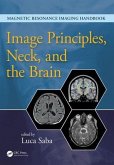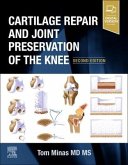Pain is one of the most common illnesses in humans. But it is not a symptom that exists alone, but is interconnected with other diseases and becomes one of the many symptoms of a complex disease. Except for some pain caused by trauma, almost all pain is related to various chronic diseases. It can be seen that pain cannot be resolved alone, but can only be resolved together with other related conditions. And this is the problem with modern medicine. The difficulty lies in knowing the cause. Previously, I had finished writing "Pain and Depression - A Clinical Comparison between Western Medicine and PL". This is a clinical comparative discussion based on seven cases listed in the book "Total Recovery" by American doctor Gary Kaplan . That is, for each case in the book, multiple PL cases with similar symptoms are listed for comparative study. Because Dr. Kaplan aims to find out the causes of various types of pain and depression, rather than just suppressing and masking the symptoms with drugs. He even wants to find the common causes of various diseases in order to simplify treatment methods and improve efficacy. This goal is exactly the same as the PL method. He concluded from theoretical research and clinical practice that abnormal inflammation caused by microglia is a common cause of various types of pain and depression. To do this, we first need to understand a little about microglia. The "Medical English Dictionary" of the People's Health Publishing House explains microglia (also called small nerve cells) as: "Microglia are mononuclear phagocytes that settle in the brain and spinal cord." Kaplan The doctor explains this in his book as follows: " Microglia are the resident immune system in the central nervous system. If anything tries to cross the protective barrier between blood vessels and the brain, microglia intervene . To protect the brain, microglia secrete inflammatory chemicals form swelling, acting as a buffer while working to destroy invaders. When this inflammatory counterattack occurs at the molecular level, people experiencing inflammation experience discomfort, fatigue, headaches, fever, and general aches. When I started studying microglia, I found dozens of articles in various medical journals, each of which related microglia to a different stressor: trauma, psychological injury, brain deficiency. Oxygen, bacterial infection, viral infection, environmental poisoning, etc., the list can be lengthened. Anytime there is tension in the central nervous system, microglia are upregulated, which is the only way they know how to respond: by creating inflammation. So all of a sudden, I saw it. When microglia are upregulated, they create widespread inflammation in the central nervous system. If they are turned on too often, they become overactive, putting the brain in a state of chronic inflammation. For example, excessive drinking can activate microglia. Researchers confirmed in a report that teenagers who drank excessively had high levels of neuroinflammation and then checked at intervals to see if the inflammation decreased. After the teens stopped drinking, their microglia remained elevated for a decade. This study demonstrates two important concepts. First, injuries have a cumulative effect. Every injury, every infection, every poisoning, every physical injury, every emotional injury leads to the same reaction. Within the brain, it stimulates microglia again and again.
Hinweis: Dieser Artikel kann nur an eine deutsche Lieferadresse ausgeliefert werden.
Hinweis: Dieser Artikel kann nur an eine deutsche Lieferadresse ausgeliefert werden.








